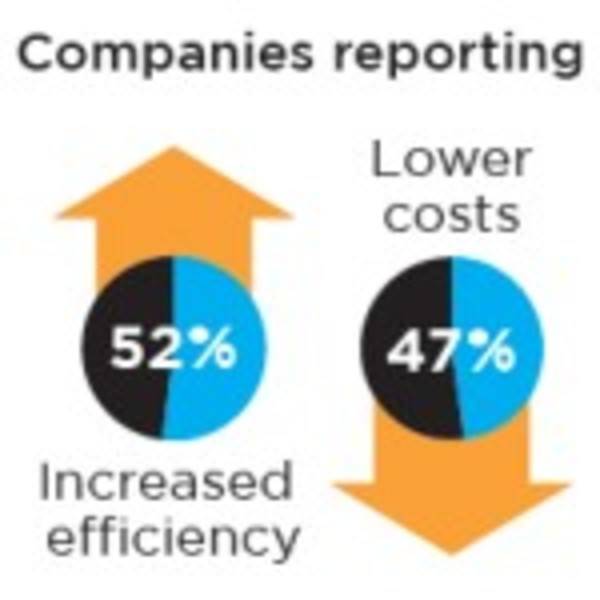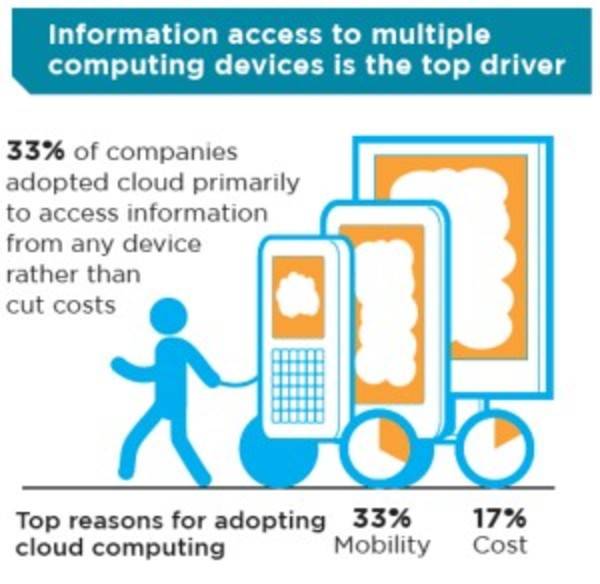One of the drivers of the current cloud computing revolution was supposed to be cost reduction. Even private cloud implementers are supposed to be spending considerably less on storage and computing power, by virtue of greater utilization and tolerance for commercial, off-the-shelf (COTS) components.

But a global survey of some 3,645 enterprise cloud computing users over the last two months, conducted by TNS for professional business services provider CSC reveals a pair of startling discoveries: First, while most businesses are saving money, the amount in most cases ranges from slim to none. Second, businesses aren’t really put off too much by that fact.
Given a list of reasons why businesses chose cloud adoption in the first place, a full one-third of respondents worldwide, and 46% of U.S.-based businesses, said it was mainly to give employees greater options for accessing resources, including from tablets and smartphones. This suggests that a good chunk of the respondents have limited their cloud adoption to online storage services such as Dropbox, Box.com, and SkyDrive. Only 10% of respondents claimed cost reduction as the key driver for their cloud adoption campaign.

Which may be just as well, because they did not report savings as a key benefit of implementation. While 47% of organizations worldwide reported some measure of operating cost reduction since adopting cloud technologies, some 35% worldwide told the survey they ended up saving less than $20,000. And a full 23% of U.S.-based firms said they ended up saving absolutely zero. Contrast this with an astounding 92% of Brazil-based firms, and 70% of Australia-based firms, reporting some degree of cost savings.
Though this next figure was actually cited as a positive, in context it’s actually more of a shock: Only 52% of respondents to the CSC survey say they’re seeing utilization benefits as a result of cloud adoption. Again, this would seem to suggest that organizations are limiting their cloud resources to public storage services, and perhaps a limited number of cloud-based Web servers, but no more.
CSC’s numbers fly directly in the face of figures from earlier in the year from other sources, including from cloud software maker Zenoss, which suggest that a majority of enterprises enter into a cloud adoption program in order to save on hardware costs. While Zenoss provides software that may help customers save costs, CSC provides consulting services for businesses that may be considering the how’s and why’s of cloud adoption in the first place. So it might not be any surprise that CSC’s interpretation suggests businesses could use some help determining how best to adopt cloud technologies.

















